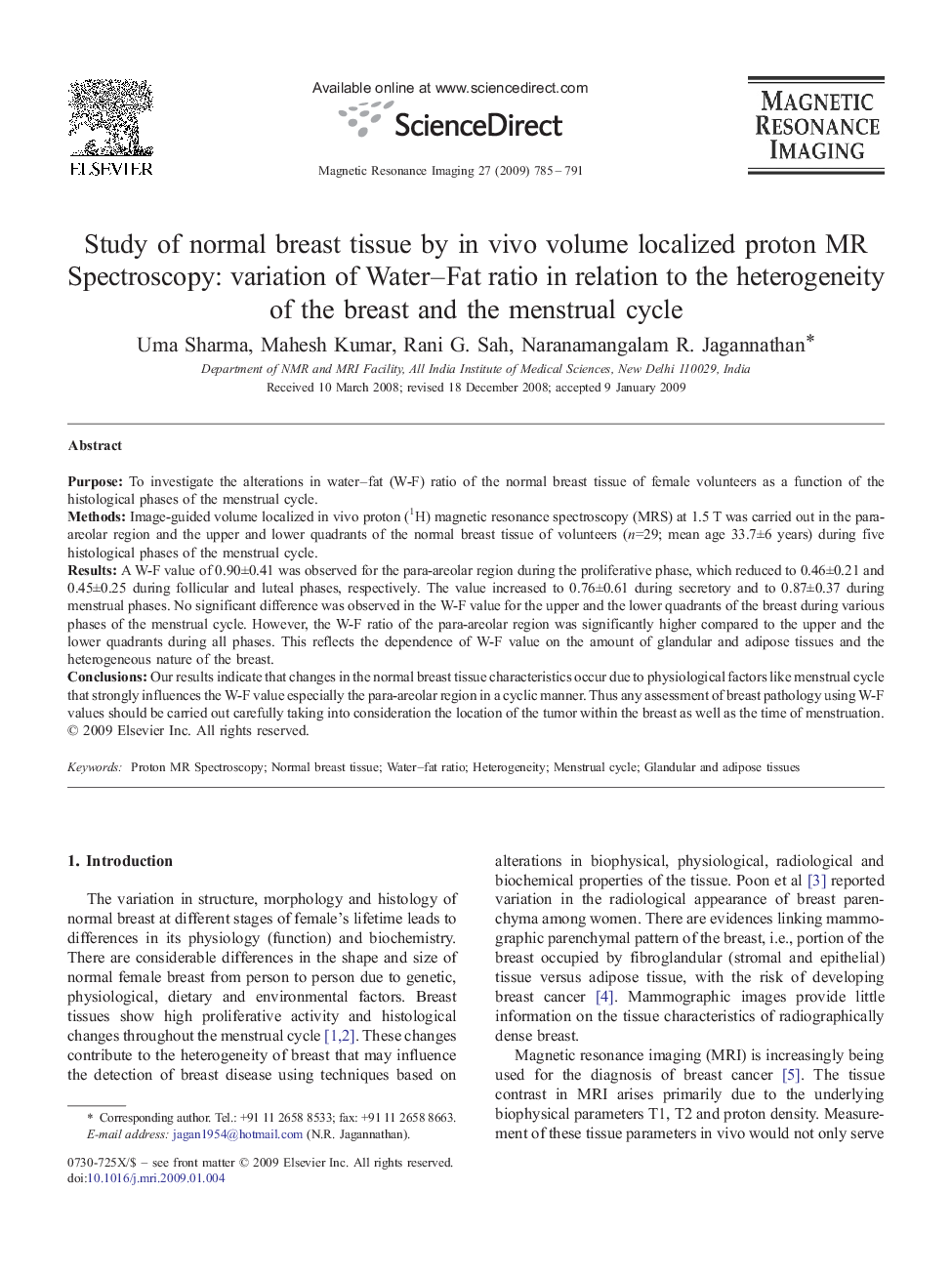| Article ID | Journal | Published Year | Pages | File Type |
|---|---|---|---|---|
| 1807131 | Magnetic Resonance Imaging | 2009 | 7 Pages |
PurposeTo investigate the alterations in water–fat (W-F) ratio of the normal breast tissue of female volunteers as a function of the histological phases of the menstrual cycle.MethodsImage-guided volume localized in vivo proton (1H) magnetic resonance spectroscopy (MRS) at 1.5 T was carried out in the para-areolar region and the upper and lower quadrants of the normal breast tissue of volunteers (n=29; mean age 33.7±6 years) during five histological phases of the menstrual cycle.ResultsA W-F value of 0.90±0.41 was observed for the para-areolar region during the proliferative phase, which reduced to 0.46±0.21 and 0.45±0.25 during follicular and luteal phases, respectively. The value increased to 0.76±0.61 during secretory and to 0.87±0.37 during menstrual phases. No significant difference was observed in the W-F value for the upper and the lower quadrants of the breast during various phases of the menstrual cycle. However, the W-F ratio of the para-areolar region was significantly higher compared to the upper and the lower quadrants during all phases. This reflects the dependence of W-F value on the amount of glandular and adipose tissues and the heterogeneous nature of the breast.ConclusionsOur results indicate that changes in the normal breast tissue characteristics occur due to physiological factors like menstrual cycle that strongly influences the W-F value especially the para-areolar region in a cyclic manner. Thus any assessment of breast pathology using W-F values should be carried out carefully taking into consideration the location of the tumor within the breast as well as the time of menstruation.
